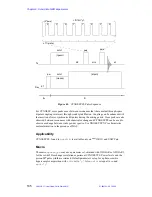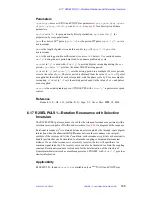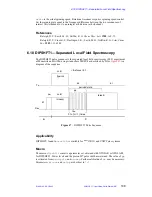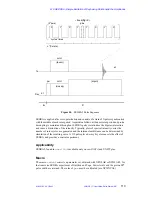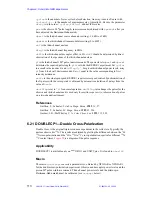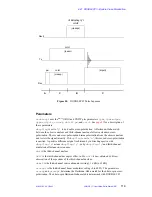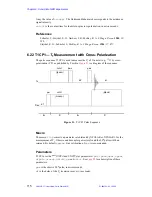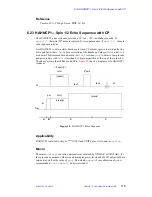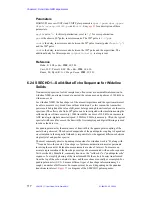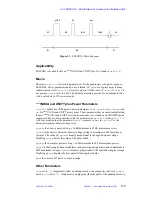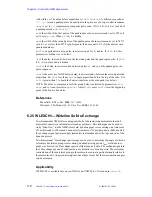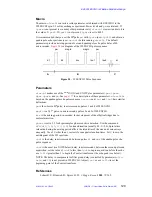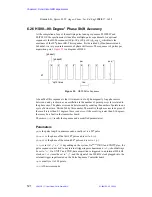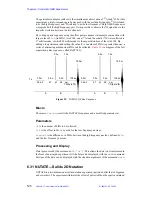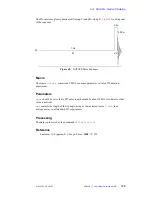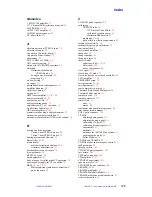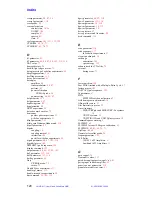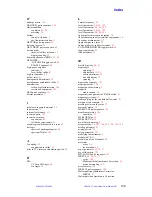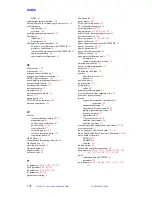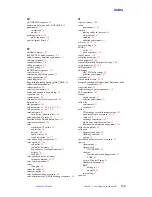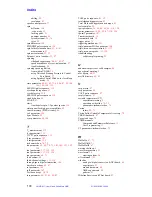
Chapter 6. Solid-State NMR Experiments
119
VNMR 6.1C User Guide: Solid-State NMR
01-999162-00 C0402
with width
pw
. The delay before acquisition is
tau1+tau2+pw
. A difference spectrum
'n'–'y'
selects a quadrupole echo spectrum in the presence of a large central resonance.
compul
set to
'y'
implements a composite pulse echo, 135(x)–90(–x)–45(x), instead of
a quadrupole echo, if
echo='y'
.
p1
is the width of the first pulse of the quadrupole echo, in microseconds, set to 90
°
or if
set to zero,
p1=pw
. When
p1
is 0, it is hidden.
pw
is the width of the second pulse of the quadrupole echo in microseconds, set to 90
°
if
spin I=1, or set less than 90
°
if spin I is greater than or equal to 3/2 (I is the nuclear spin
quantum number).
p180
is an optional inversion pulse, in microseconds, for T
1
studies. If
p180
is 0, this
parameter is hidden (see
d2
below).
d2
is the delay, in seconds, between the inversion pulse and the quadrupole echo; if
p180
is 0,
d2
is not used and is hidden.
tau1
is the delay, in microseconds, between pulses
p1
and
pw
of the quadrupole echo
pulse sequence.
tau2
is the exact (see NOTE below) delay, in microseconds, between the second pulse and
acquisition. Set
tau2
less than
tau1
to begin acquisition before the top of the echo. Use
lsfid
greater than 1 to begin the Fourier transform at the echo peak (see below).
NOTE: The delay to compensate for filter group delay (controlled by parameters
alfa
,
beta
, and
fb
) is not present in
ssecho1
. Adjust
tau2
or use
lsfid
to set the beginning
point of the Fourier transform.
References
Mansfield, P. Phys. Rev. 1965, 137, A961.
Weisman, I. D.; Bennett, L. H. Phys. Rev. 1969, 181, 1344.
6.25 WLEXCH1—Wideline Solids Exchange
Two-dimensional NMR offers a unique method of characterizing molecular order and
molecular dynamics in solid materials such as polymers. This technique can be used to
study “ultra-slow” (on the NMR time scale) dynamic processes occurring on a time scale
of 1 millisecond to 100 seconds. In an axially symmetric
2
H powder pattern (Pake doublet),
the exchange signal patterns supply immediate information about the type and rate of the
dynamic process.
Two-dimensional
2
H exchange spectroscopy can be used to determine the angle at which a
selectively deuterated group rotates during a defined mixing period t
mix
. Isolated cross-
peaks are observed in 2D-exchange spectra of liquids and crystals. The exchange signals in
the 2D-exchange spectra of solid powders are actually very broad spectra. The molecular
reorientation of the deuterated group in the molecule occurs at a particular angle relative to
the molecular axis. At a given mixing time, one ellipse for each of these reorientation angles
can be measured.
Applicability
WLEXCH1 is available only on
UNITY
INOVA and UNITYplus. It is found in
userlib
.

